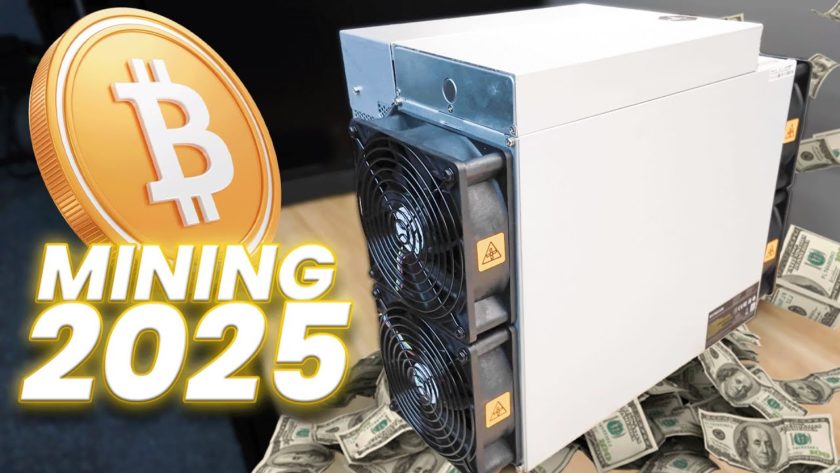How Bitcoin Can Solve the Automation Crisis
December 10, 2018 by Evan Faggart
Automation has become a big fear in developed economies over the last few years. With the threat of huge waves of unemployment — coming from machines replacing human jobs — many people have taken up the fight against automation. But does automation really cause permanent unemployment? And can Bitcoin help reduce the pain of automation?
Also read: Stablecoins: Bad Money For the Modern Age
Subscribe to the Bitsonline YouTube channel for great videos featuring industry insiders & experts
Why Is Automation Threatening to Put the World Out of Work?
On the surface, the automation problem is straightforward. Jobs currently performed by humans get replaced by machines, so companies no longer have a need for human workers.
But if we look at history, we’ve seen that automation hasn’t been an issue at all. When automation was introduced, entrepreneurs simply adapted and ultimately made industries bigger and more lucrative — or created new industries altogether.
For example, when the automobile became affordable for the masses, horse cart manufacturers protested against cars, claiming that eliminating the need for horses would put them out of business. But they converted their businesses to automobile maintenance and repair shops, and everyone stayed happy and became wealthier. Of course, there was likely a period of small unemployment while the market adjusted, but it all worked out in the end with relative ease.
So if both the problem and solution is so simple, why is everyone all worked up about modern automation? Well, it gets a lot more complicated when you really look into the issue.
In the modern era, we’re not talking about one piece of new technology. We’re talking about replacing entire manufacturing industries with machines — all at once. Hundreds of thousands of jobs will be wiped out in an instant, seemingly with little room for entrepreneurs to adapt and expand the industries.
And with newly-emerging, human-based industries being primarily based around services rather than manufacturing, these unemployed people won’t have the skills and experience to simply pick up a new job.
The Real Problem Is Not Technology, It’s Our Money
When addressing the automation issue, everyone seems to attack the technology. Take away the machines, and the human jobs will stay put, they say. But not many people have stopped to ask the question: is the technology itself the real problem, or is it something else?
In any market economy, progress is driven by capital — we’re talking tools, machinery and raw materials here, not money. Capital is used to produce consumer goods, which people buy and allow entrepreneurs to earn a profit. Capital must be manipulated by labor to produce a finished product. And the market directs labor and capital into the most useful production processes through money — workers chase the highest wages, while capital owners and entrepreneurs chase the highest prices for their goods.
So, with money being the driving force behind capital and labor allocation, then it must play a role in the automation issue, since the entire problem involves replacing labor with an extra layer of capital.

When manufacturing industries reach a stage of mass production, entrepreneurs begin experimenting with automation to reduce labor cost and increase profits. They always have, even before we had machines that could replace thousands of jobs instantly.
Historically, when that smaller-scale automation made it possible to make products without humans, it has freed up labor that entrepreneurs can use in brand-new industries that couldn’t exist without that newly-allocated labor.
This is where we have to think about how capital works, and how money can change the capital allocation process.
Capital is allocated towards production in levels, or stages. All production processes start out using high amounts of labor, and minimal capital. As capital is introduced to the production process, we are able to produce the same amount of product with less labor, and eventually we can produce more product with less labor. That freed up labor will then move “up” into “higher” levels of production, creating new goods that make life even easier.
Add money to that equation, and we get modern capital markets. Entrepreneurs decide to introduce more capital and remove labor when prices for capital and consumption goods change — thereby affecting profits. When it becomes profitable to use large amounts of capital and minimal amounts of labor, workers are moved to new production processes where maximum profitability requires more labor than capital.
In an economy without monetary manipulation, the prices for capital and consumption goods are determined solely by the spending and saving habits of consumers. When people spend a lot, there is less money available for loans, so interest rates go up. This tells entrepreneurs that consumers want more of what is currently being produced and that starting new, labor-intensive industries would not be profitable, since the loans needed to start those industries have become too expensive.
When consumers start saving their money, the opposite happens. Interest rates drop, and entrepreneurs learn that consumers don’t want more of the same products anymore, because the loans needed to start new industries have become much more affordable.
But when prices are changed through monetary manipulation — such as inflation from central banks — consumers are no longer the sole deciders of capital allocation, and it can be distorted in a way that leads to the automation of existing industries while making it infeasible to start new, labor-intensive processes.
Central bank inflation does two things that create a major contributor to the automation problem. First, it drives prices for consumer goods down, making people spend more rather than saving, since their saved money will lose value over time. Second, it results in lowered interest rates, because central banks create inflation by printing money so they can buy securities in order to lower interest rates.
This gives entrepreneurs mixed signals. On one hand, consumers are spending more, making profits higher, which suggests that they want more of the same products. On the other hand, interest rates are dropping and loans are becoming more affordable, signalling that investments should be made in different industries.
Entrepreneurs often interpret these mixed signals as a need to expand existing production processes, either by opening new factories or retail stores, or by purchasing more capital to displace labor.
When the entrepreneurs decide to purchase more capital to displace labor, automation is often introduced to the production process.
In an economy without central bank inflation, this would free labor to be used in new production processes. But in our world entrepreneurs use much of their cheap credit to expand existing industries by introducing widespread automation. Thus, we are left with highly automated production operations and nowhere for that extra labor to go.
And this is how we will end up with massive unemployment. Not because of the technology itself, but because of monetary manipulation from central banks.
How Can Bitcoin Help This Problem?
If you’ve read this far, you’ve probably already figured out how Bitcoin can make widespread automation less devastating.
Bitcoin is sound money, it is scarce and can’t be printed endlessly by a central bank. In a bitcoin-based economy, central banks can’t manipulate interest rates, so entrepreneurs won’t get confusing signals about what to do with their capital. And so, automation in a Bitcoin economy really will be as simple as it sounds.
In a Bitcoin economy — where interest rates are real and capital is allocated without manipulation — automation will still hurt, just like it always has throughout history. But it won’t be permanent, and it won’t be devastating to the human race.
Entrepreneurs will introduce mass automation when it will become profitable to do so, and labor will be freed up to move into higher stages of production, into brand-new industries that change how we live our lives. It won’t happen instantly, but that brief period of growing pains will lead to an improved world, where everyone has a better life.
Bitcoin can’t make the world perfect in most cases. But in situations like the automation crisis, it certainly could make the world a lot better.
Do you think Bitcoin can solve the automation crisis? Share your thoughts in the comments section.
Images via Essentra Components, Reuters, Brookings





